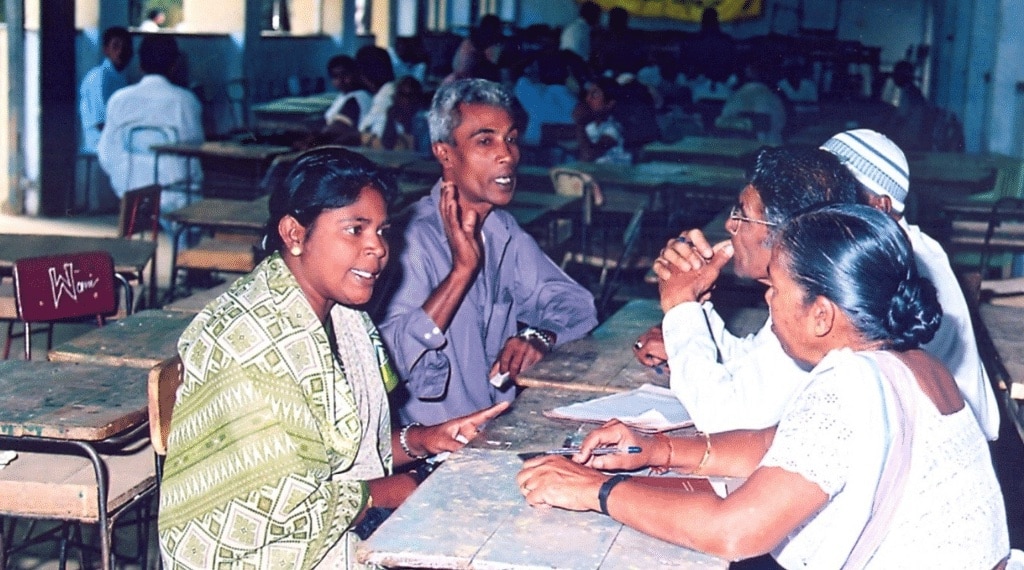InAsia
Insights and Analysis
Internet Inaccessibility Plagues “Social Media Capital of the World”
October 24, 2018
The Philippines has been called the social media capital of the world, as millions of Filipinos spend an average of almost four hours a day on social media sites, particularly Facebook, the highest social media use in the world. Filipinos are known to be early technology adopters and are internet savvy, especially when it comes to communicating online. Yet the country still lags behind its ASEAN neighbors and the rest of the world in terms of internet speed, cost, and accessibility. One reason for this lagging performance is the nation’s geography, an archipelago of 7,107 islands that poses a challenge for basic connectivity. But a new report from The Asia Foundation has found that outdated laws and policies have blocked the deployment of technologies that could bring the Philippines fully into the digital age.

The internet is widely recognized as a key driver of economic growth and equal access to information, opportunities the Philippines is missing out on. SMEs cannot take full advantage of e-commerce, and BPOs—business process outsourcing companies—which generate local employment, also suffer from slow internet speeds.
There are promising technologies currently being tested and used in other countries that could significantly improve internet connectivity in the Philippines. On October 18, The Asia Foundation and the Better Broadband Alliance (BBA) released a new report, From Analog to Digital: Philippine Policy and Emerging internet Technologies, which assesses the feasibility of these new technologies in the Philippine policy context. Based on the assessment, three technologies seem appropriate for the Philippines:
1. Fiber to the premises with gigabit passive optical network (GPON). Already available in parts of the Philippines, GPON technology allows for inexpensive, high-speed fiber-optic connections directly to the end user, at a cost the report found could be cheaper than current telco offerings. GPON is the simplest and most cost-effective wired technology available for providing broadband services in densely populated areas.
2. Fixed mobile substitution with 5G. Enthusiastically supported by equipment vendors, network operators, and device manufacturers, 5G is a new mobile standard that could substitute for fixed connections to deliver high-speed internet access. The report notes, however, that 5G will require new radio spectrum and high-speed fiber to cell towers to meet faster speed requirements.
3. Low earth orbit satellite networks (LEO). Orbiting at just 400–900 kilometers above the earth, LEO satellites promise low latency, and LEO networks are the only satellite systems that provide complete coverage of the earth, including the north and south poles, making them a key area of innovation for achieving universal access.
These promising technologies are all being tested or deployed in other countries, but according to the report, they cannot easily penetrate the Philippines, due to analog-era laws and policies that are ill suited to the digital age.

Photo/Angelo-Niño-Gutierrez
Under the Public Telecommunications Policy Act of 1995, only a public telco with a congressional franchise and authority from the National Telecommunications Commission can build transmission and switching facilities, offer local landline service, or operate interexchange backbone service or an international gateway facility. Entities that wish to operate an international gateway or a mobile network are required to roll out local exchange services or landlines. This technology-centric policy has hampered competition in traditional telecom services and effectively bars new players such as internet service providers from building new, data-only networks, even in areas where the large telcos won’t go.

The Public Service Act of 1936 provides that telcos be regulated as public utilities, which restricts foreign ownership to 40 percent. Amending the Act to loosen the restrictions on who can operate a network and allow foreign-owned companies to enter the market would spur investment and help expand both fixed and wired broadband services.
Considering the mismatch of analog-era policies and digital technologies, the report suggests reforms to allow providers to deploy the most appropriate technologies to improve internet connection in the Philippines. Recommendations include:
1. Amend the Public Telecommunications Policy Act of 1995 to remove landline installation as a requirement for entry into the telecommunications and broadband markets.
2. Amend the Public Service Act of 1936 to relax foreign ownership limits and encourage investment and competition by both domestic and foreign operators.
3. Pass the Open Access in Data Transmission bill to distinguish data-only services from basic telecommunications and remove the landline requirement, lowering regulatory barriers to entry; reform spectrum management; and establish rules for sharing infrastructure.
If these reforms are realized, the Philippines can finally join the rest of the modern world in the digital age.
From Analog to Digital: Philippine Policy and Emerging Internet Technologies was funded by Google.
Mari Chrys Pablo is senior program officer for economic reform and development entrepreneurship with The Asia Foundation in the Philippines. She can be reached at [email protected]. The views and opinions expressed here are those of the author and not those of The Asia Foundation.
1 Comment
About our blog, InAsia
InAsia is posted and distributed every other Wednesday evening, Pacific Time. If you have any questions, please send an email to [email protected].
Contact
For questions about InAsia, or for our cross-post and re-use policy, please send an email to [email protected].The Asia Foundation
465 California St., 9th Floor
San Francisco, CA 94104
The Latest Across Asia
Program Snapshot
June 18, 2024
Program Snapshot
June 12, 2024
Media Coverage
June 7, 2024
Media Coverage
June 6, 2024

AsiaFoundation70
This year, we celebrate 70 years of improving lives and expanding opportunities.







Super good